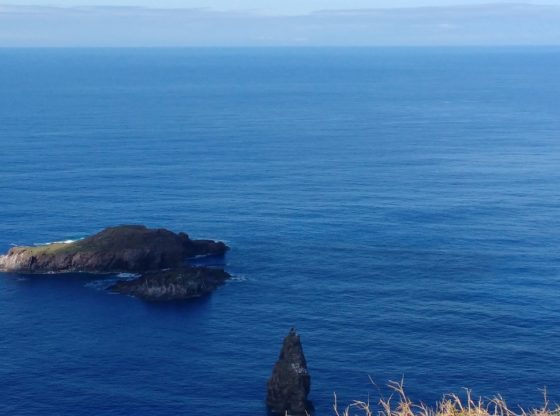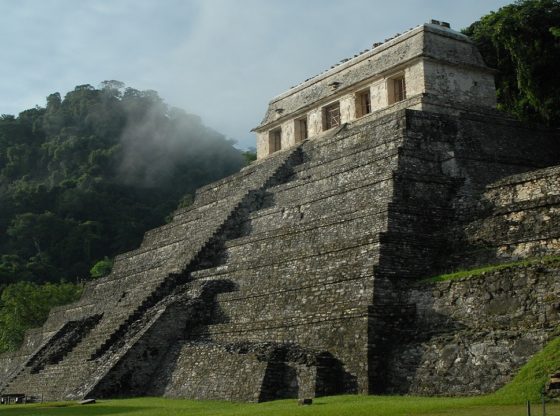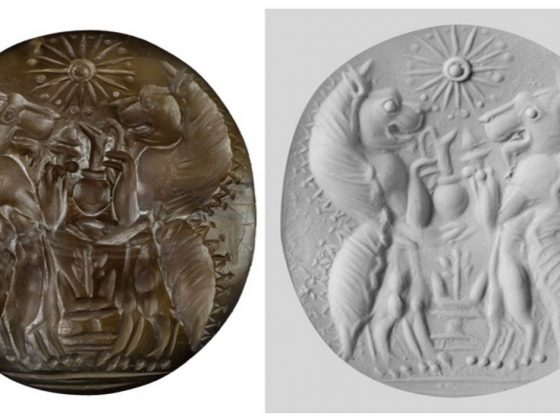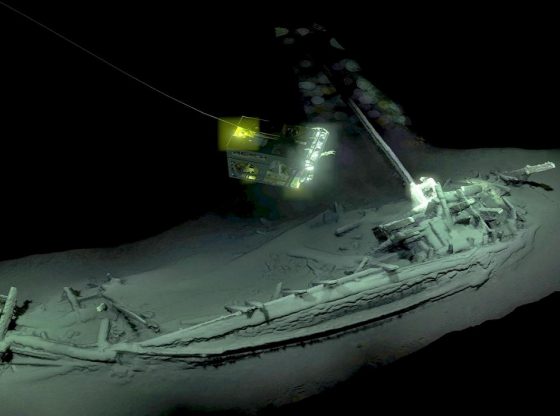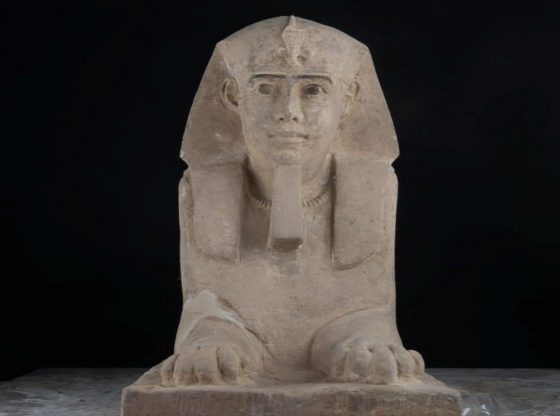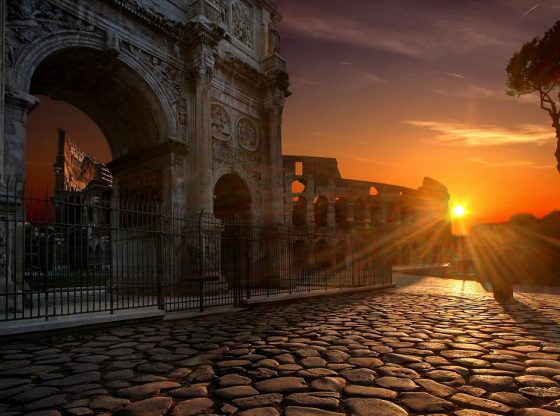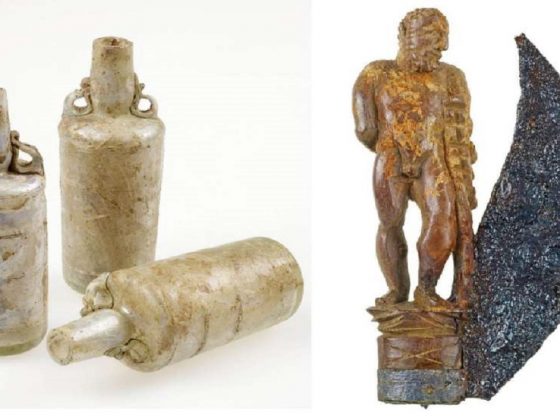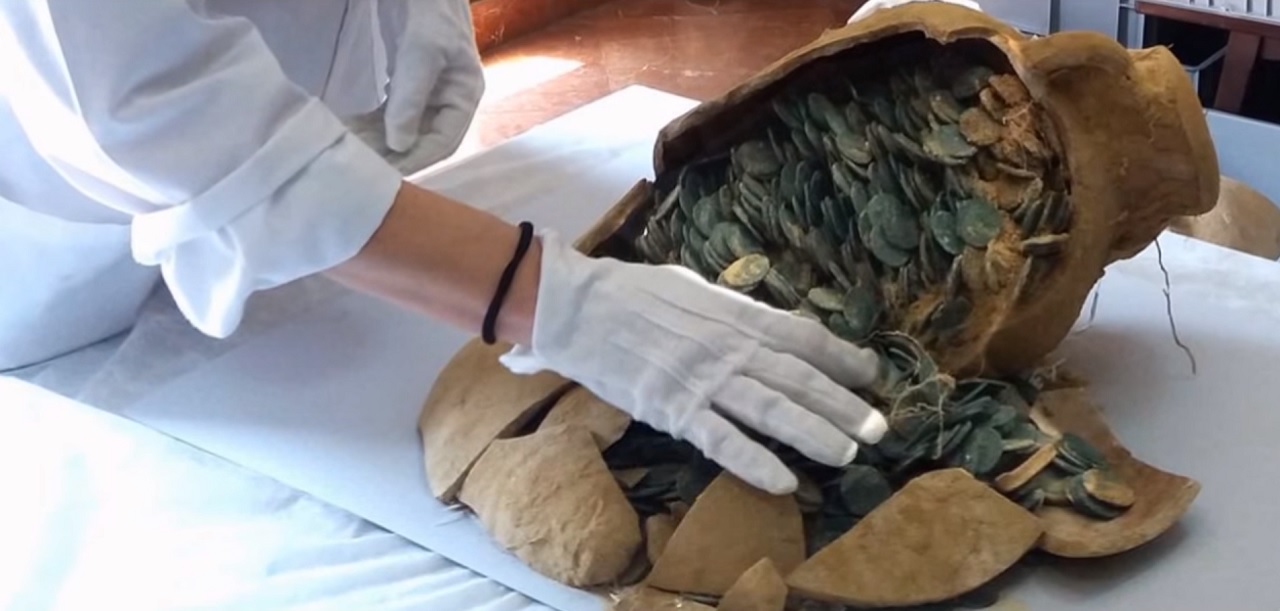
A 600 kilogram (1,300 pounds) ancient Roman treasure has been found in Spain. The coins were found inside a total of 19 amphora’s – 10 intact.
The treasure hoard was found accidentally by a group of Spanish road workers in the suburbs of Seville. The road workers were putting down new water pipes for the local inhabitants. But accidentally found a treasure consisting of over half a ton of coins from the period between the late 200’s and early 300’s AD.
The coins were found hidden in 19 amphorae (clay vases), just a meter below the surface. Most of the coins are made of bronze, but a small part also shows traces of silver.
Constantine the Great
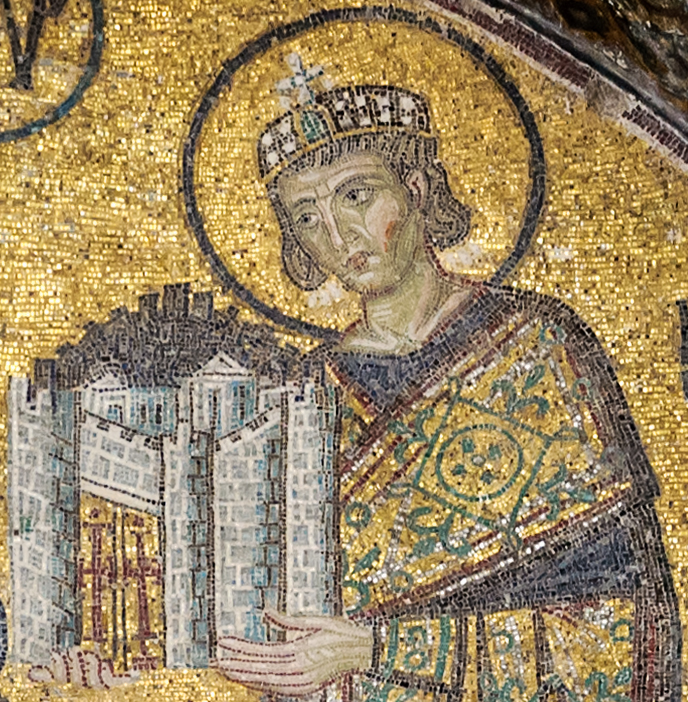
The coins are on the one side imprinted with an image of the emperors Maximian and Constantine the Great and on the other side roman allegories. The two emperors ruled between 286-305 AD and 306-337 AD.
Maximian led Roman expeditionary forces into Spain against North African raiders between 296 and 298 AD but later retired to Massalia (modern-day Marseilles) in Gaul, where he died under suspicious circumstances in 310 AD. Constantine reunited the Eastern and Western portions of the Empire after a period of rebellion.
Hispalis
Over the years, the city of Seville was part of the economic power center of Andalusia on the Iberian peninsula, the Roman military invaded in the early 200’s BC and then ruled the area as a province of the Roman Empire for about 600 years. From the beginning of the Second Punic War in 218 BCE to the early fifth century CE, when a Germanic tribe known as the Visigoths succeeded in forcing a Roman withdrawal.
Sevilla was known as Hispalis during Roman rule and there are still existing Roman features including the remnants of an aqueduct, a temple in Mármoles Street, the columns of La Alameda de Hércules, the remains exposed in situ in the underground Antiquarium of the Metropol Parasol building and the remains in the Patio de Banderas square near of the Seville Cathedral. The walls surrounding the city were originally built during the rule of Julius Caesar, but their current course and design were the results of Moorish reconstructions.
Soldiers Salary?
According to the local archaeological authorities, the coins show few traces of use, which would, therefore, suggest that they probably never was in circulation among ordinary Romans. The coins are also so similar to each other that they must have been produced during the same short period. They were most likely minted in the eastern part of the Empire (in Greece, Asia Minor or the Middle East, et al.) and imported into the area. The coins were probably to be used to pay taxes or perhaps Roman soldiers.
Click here to view a video of the findings.

